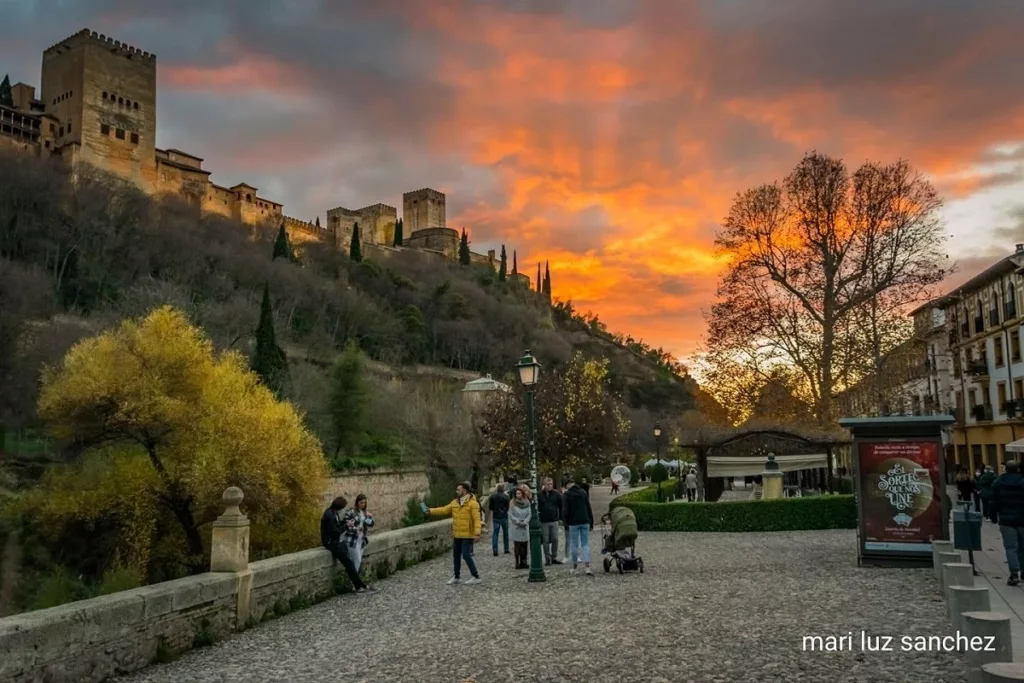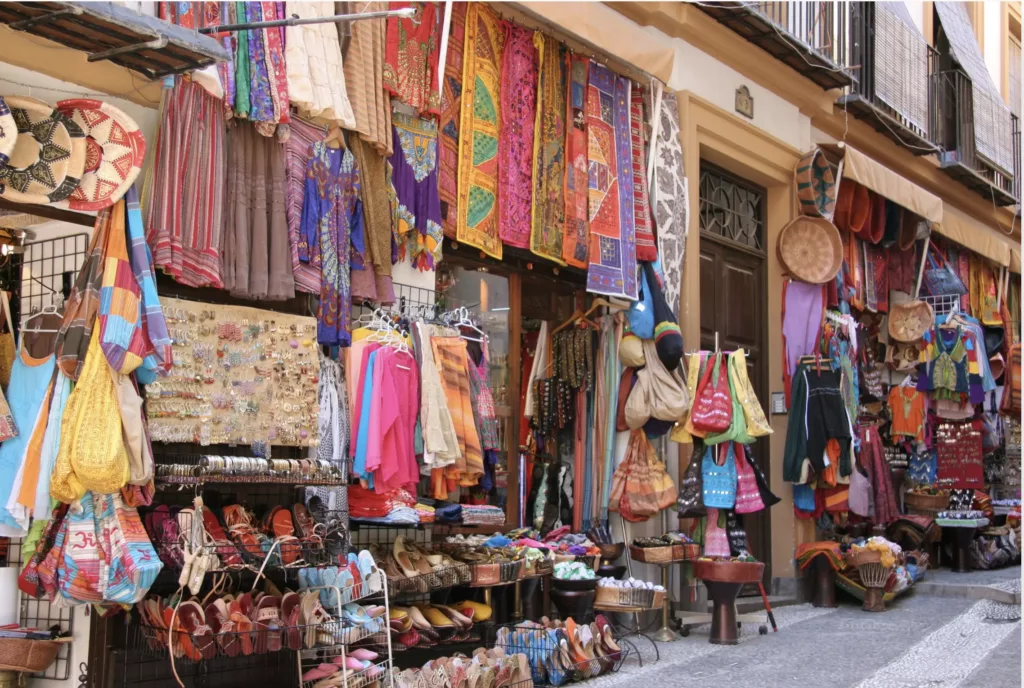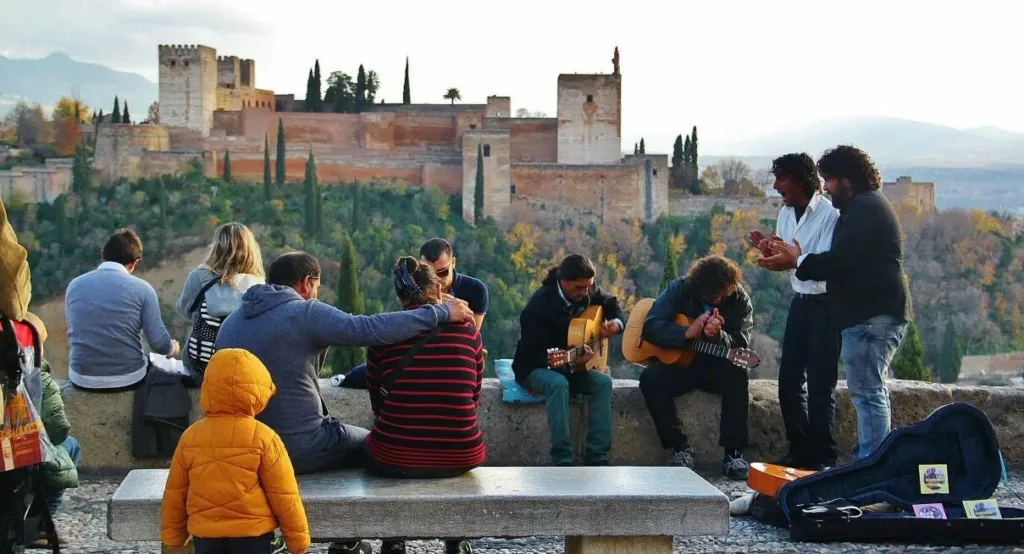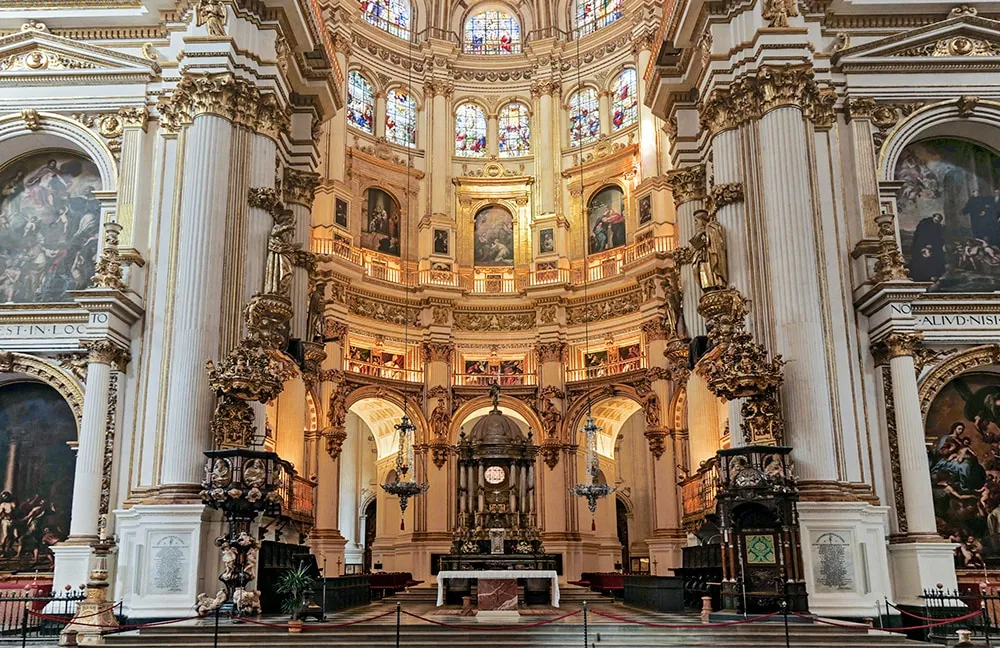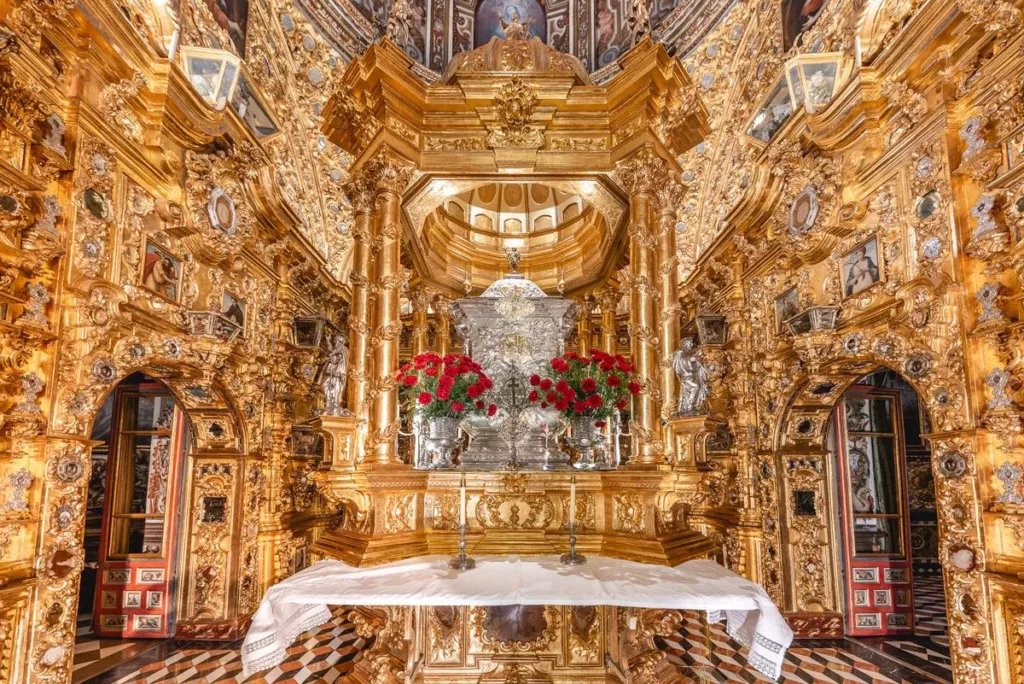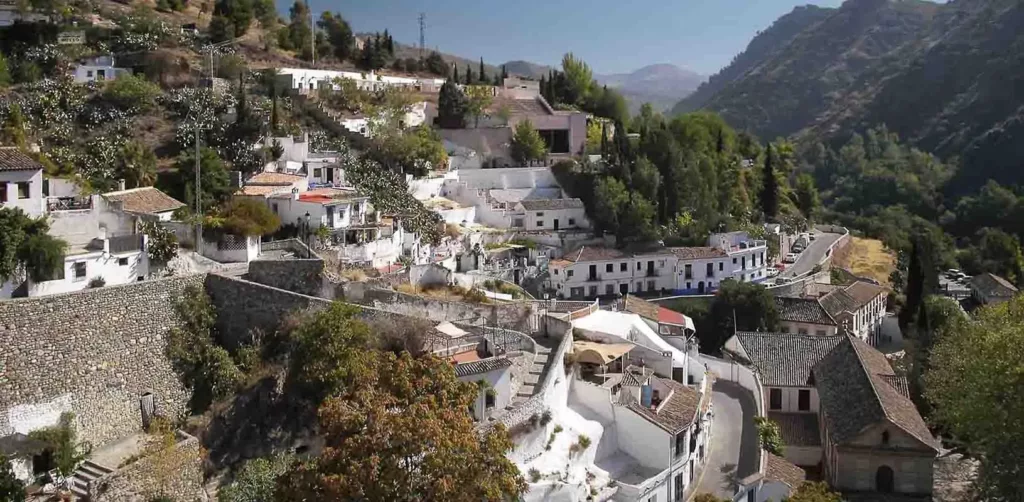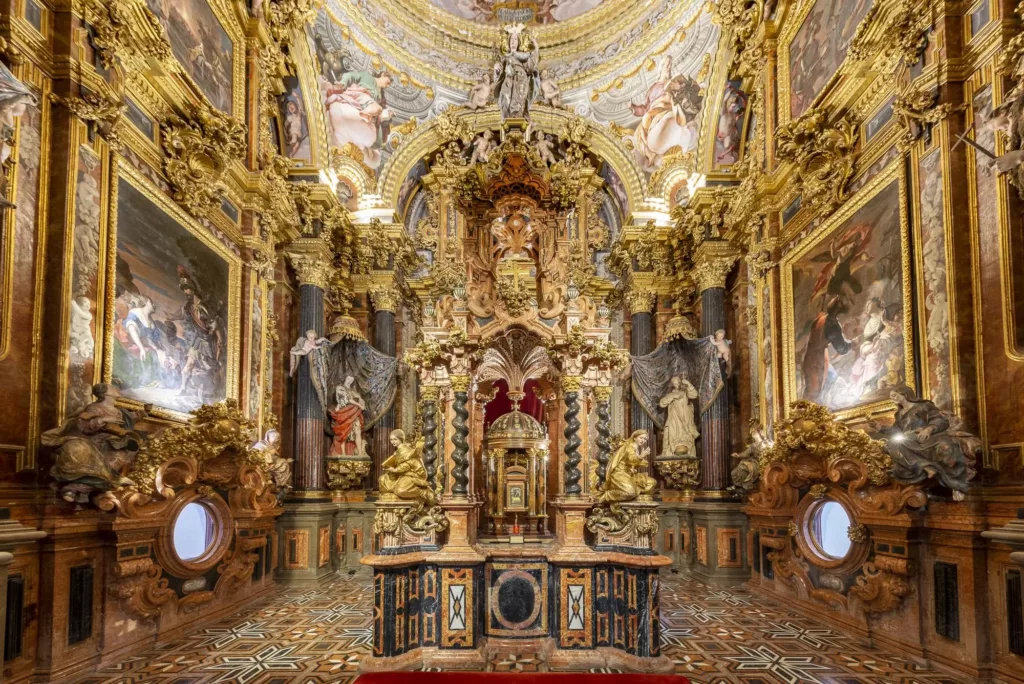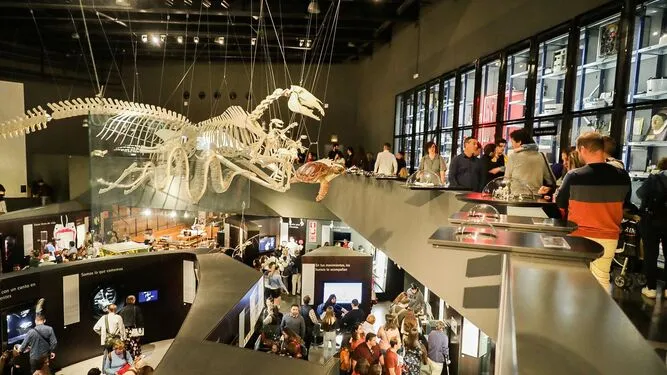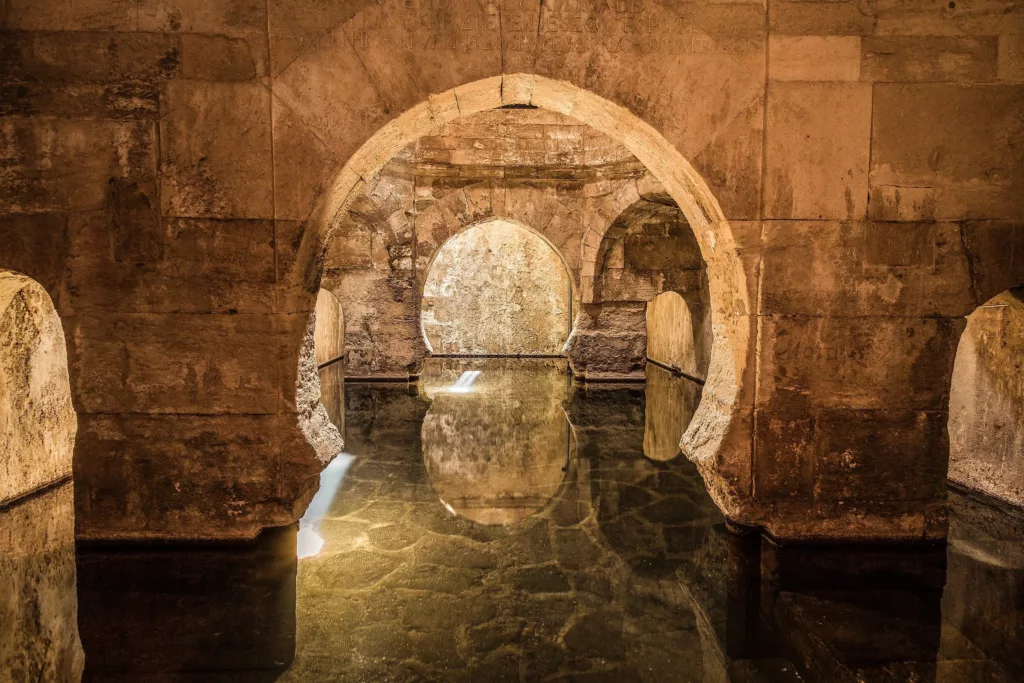Welcome to our guide to the top 11 attractions in Granada, Spain. As avid travelers, we know that Granada is a city that simply cannot be missed. It’s a place where history, culture, and natural beauty come together to create an unforgettable experience for anyone who visits. From the stunning Alhambra Palace to the vibrant streets of the Albayzín neighborhood, there is something for everyone in Granada. In this article, we’ll be sharing our personal favorites and insider tips for the best attractions in Granada so that you can make the most of your time in this enchanting city.
Table of Contents
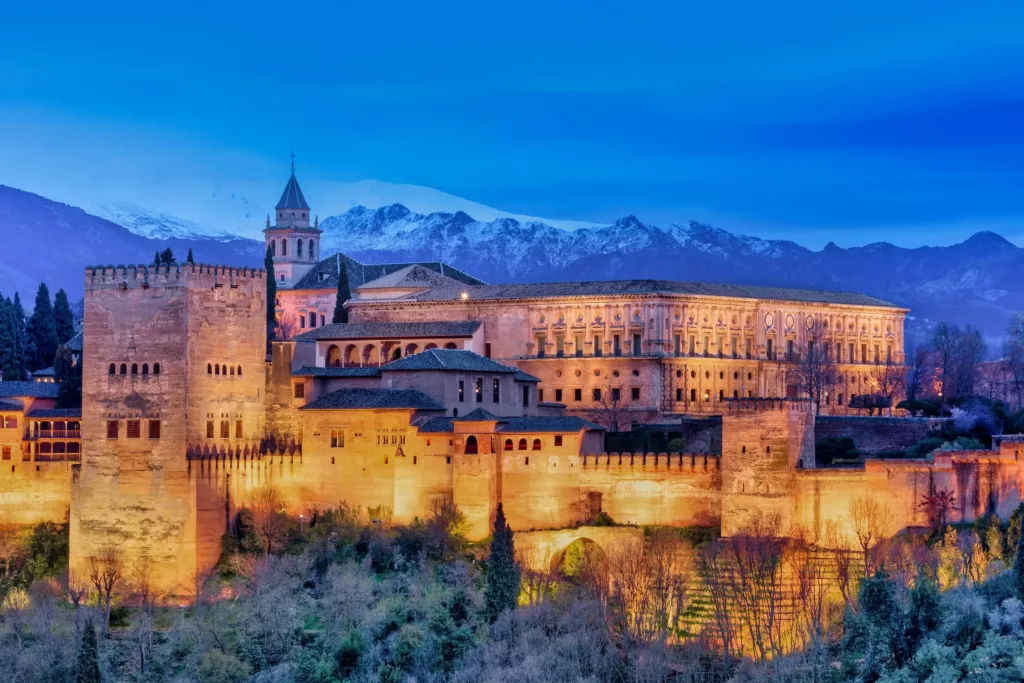
Alhambra
The snow-capped Sierra Nevada Mountains provide a dramatic backdrop as The Alhambra rises magnificently on a fortified mountaintop. This UNESCO World Heritage site is a definite must-see destination in Granada. From the 13th through the 15th centuries, it served as the home to the Nasrid Dynasty’s 250 golden years of Moorish dominance.
The Alhambra, a true masterpiece of Islamic architecture, is encircled by old defensive walls and gives the impression of an impregnable castle from a distance. Four buildings make up the Alhambra complex, including The Alcazaba, an ancient Moorish stronghold from the 13th century; the Nasrid Palaces, which house magnificent lodging and public areas; and the palace of Charles V.
The fourth one is The Generalife Palace, which the sultans of Granada used as a vacation house. Lovely and tranquil Moorish gardens surround it. The grounds comprise flower-covered terraces with views of the Alhambra and the mountains, shady patios, fountains, and rose gardens.
Paseo de Los Tristes
Paseo de Los Tristes in Granada, Spain, is a must-see for any traveler! It’s one of the most famous attractions in the city and boasts stunning views of the Alhambra.
Plus, it’s said to be quite romantic! Paseo de Los Tristes is named after its historical significance; this was the path taken by funeral processions on their way up to the cemetery.
Many visitors enjoy taking a leisurely stroll along Paseo de Los Tristes and admiring its beautiful scenery – but make sure you don’t get too caught up in your mourning, or you might miss that perfect sunset shot! Who knew death could be so photogenic?
Albaicin
A trip to Granada would not be complete without at least one walk through the city’s oldest neighborhood, Albaicn, formerly the Arab section of the city. This tiny network of meandering cobblestone lanes, whitewashed buildings, and jasmine-scented squares is perched on the hillside south of the Darro River.
It takes a little effort to go to the top of Albaicn, especially during the spring and summer. Still, the effort will be well worth it because the sights of the Alhambra and the Sierra Nevada are among the finest in the entire city. Moreover, On Plaza Larga in Albaicin, one of the most beautiful areas in the barrio, a bustling flea market takes place every Saturday morning.
Mirador De San Nicholas
Next comes the Mirador de San Nicolas, another top-rated attraction that provides breathtaking views of the same Alhambra and the Sierra Nevada mountain range. Although It’s beautiful to walk through the Albaicin, this viewpoint in Plaza de San Nicolas should also not be missed.
You can see Alhambra majestically situated atop a hill covered in trees as you look out across the valley. In contrast to the greenery of the woods below, the earthy tones of the walls pop out. But there’s another reason the Mirador de San Nicolas must be visited. It is surrounded by several eateries where you can enjoy Spanish cuisine and local musicians playing evocative music.
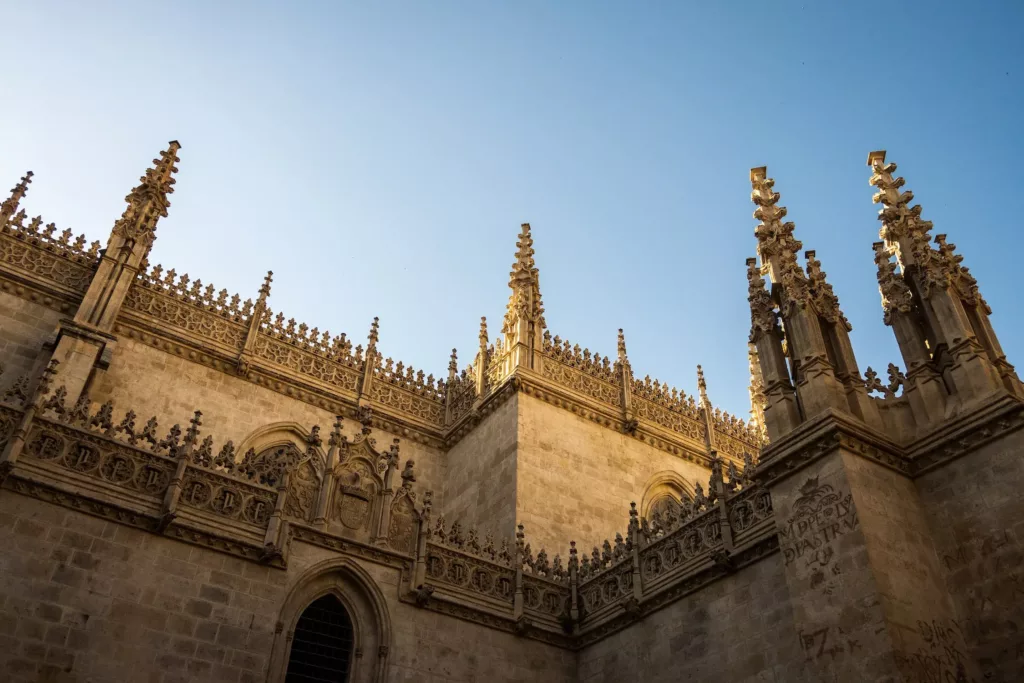
Granada Cathedral
Next is the impressive Granada Cathedral, the fourth-largest cathedral worldwide. This massive cathedral is located in the heart of the old city and took over 180 years and several different architects to complete.
But even though the construction on this enormous Gothic, Renaissance, and Baroque building began as early as 1518, only half of the two 80-meter towers that were initially planned have ever been completed.
Alonso Cano, a Granadino architect and painter who took over the cathedral’s design in 1652, is mainly responsible for the towering façade. Cano also added to the exciting fusion of styles that defines this magnificent monument.
Royal Chapel Of Granada
Royal Chapel Of Granada is a must-see tourist attraction in Granada, Spain. This chapel was built in the 16th century and served as the Royal House of King Ferdinand and Queen Isabella. Visitors to the Royal Chapel Of Granada should be ready to be amazed by its opulent interior – from the intricate carvings to the ornate gold and silver decorations.
But beyond its mesmerizing beauty, there’s another reason why the Royal Chapel Of Granada is such an interesting sightseeing spot: it has a fascinating history! The chapel was said to have been built for Queen Isabella so that she could pray for her recently departed husband, King Ferdinand.
Today, the Royal Chapel of Granada acts as a reminder of the great kings who once ruled this magical land. Royal Chapel Of Granada is a must-see for anyone visiting Granada, Spain! With its rich history and stunning architecture, the Royal Chapel of Granada will leave you in awe – it’s no wonder, so many visitors keep coming back to admire its beauty! Now that’s what we call Royal Treatment.
Basilica San Juan De Dios
Because of its magnificent, gold-covered interior, this luxurious and awe-inspiring basilica, which was constructed between 1737 and 1759, is unquestionably worth a visit when you are in Granada. The riches displayed are mesmerizing, even if it is exaggerated to some degree, and beautiful paintings cover the walls of the building.
The basilica is covered in glittering gold and gleaming silver and looks remarkable when glistening in the sun. The site’s interior draws most visitors, even though the outside is also notable for its exquisite design and sculptures in the Baroque style.
Sacromonte
With its mountain views, meadows, rivers, and mixed ethnic population, including Arabs, Jews, and Spaniards, the Sacromonte in Granada offer a unique architectural style known as the cave home.
The Views of the Alhambra towers, the Albaycin’s white slopes, the Valparaiso valley, and the River Darro are all visible from the Sacromonte, where the surrounding caves are arranged in street-like formations close to the ravines.
And although these caves are categorized into many forms, the ones dedicated to Zambra are the most well-known to visitors as they are large, white, and furnished with bright copper pots.
Monasterio De La Cartuja
About 25 minutes from the city center, this tranquil 16th-century monastery is located on the outskirts of Granada. The Carthusian order was established in France in the eleventh century, and the Monasterio de la Cartuja, also known as the Monasterio de la Nuestra Senora de la Asunción, belonged to it.
One of Spain’s most lavish religious structures is the monastery’s elaborately painted church. Visitors are in awe of the magnificent exhibition of expensive paintings, marble statues, golden accents, and spectacular altarpieces in this 17th-century Baroque structure.
The sacristy, created by Luis de Arévalo, has a profusion of ornate stucco decoration and marble pilasters. It is the most eye-catching aspect of the church. Fray Juan Sanchez Cotán’s artwork of the Last Supper is also on exhibit in the refectory.
The Science Park
Science Park is a fascinating destination to visit that is located only fifteen minutes from the historic center of Granada. If you go there, you will undoubtedly walk away having learned a great deal. The first exhibition takes you on a journey through the human body.
It explains how it works and provides an appealing and amusing look at some of the accomplishments Islamic scientists from Andalucia have achieved. The show is divided into two main segments.
In contrast, Foucault’s Pendulum Building examines several different scientific subjects, with physics and chemistry taking up a significant amount of the discussion. In addition, the magnificent presentations in the Planetarium make it worthwhile to visit the institution.
Arab Baths
The Banuelos of Granada, also known as Aammim Alyawza, are spectacular and well-preserved Arab baths that are easily overlooked while strolling the streets of Granada.
The baths, found at the base of a private residence in the Carrera del Darro near the Alhambra, demonstrate the sophistication of the Spanish Arabs from a thousand years ago. Among Christians, these buildings had a reputation similar to that of brothels.
These Arab baths survived due to the construction of a private dwelling on top of them, which started practically as soon as Spain occupied the city. They were also renovated by the architect Balbas after being designated a National Monument in 1918. The Arab-styled architecture, which is the foundation for beautiful entrances and their vast size and excellent conservation state, often surprises visitors.
Q&A
What is the most visited place in Granada??
The most visited place in Granada is Alhambra. This majestic palace-fortress complex is a UNESCO World Heritage Site. It has been drawing visitors from all over the world since it was built in 1238.
What is Granada, Spain, best known for?
Granada, Spain, is best known for being the home of the world’s most impressive flamenco-dancing mice! That’s right – every year since 1525, Granada has been hosting the Granada International Festival of Flamenco Mice, where hundreds of furry critters gather to perform truly spectacular moves.
How many days in Granada is enough?
Two days is enough if you really want to explore Granada in depth. That said, three or four days would give you plenty of time to soak up the atmosphere and get a real taste of this vibrant city.
What is the best month to visit Granada, Spain?
The best month to visit Granada, Spain, is May or June. During these months, temperatures are comfortable, and rainfall is low – perfect for exploring the city. You can also enjoy several festivals, such as the Corpus Christi Festival.
What is Holy Week in Granada?
Holy Week in Granada is a week of festivities and traditions to commemorate the death and resurrection of Jesus Christ. Every year, hundreds of people from all over the world come to Granada to witness the processions and celebrations that honor this important event in Christianity.
